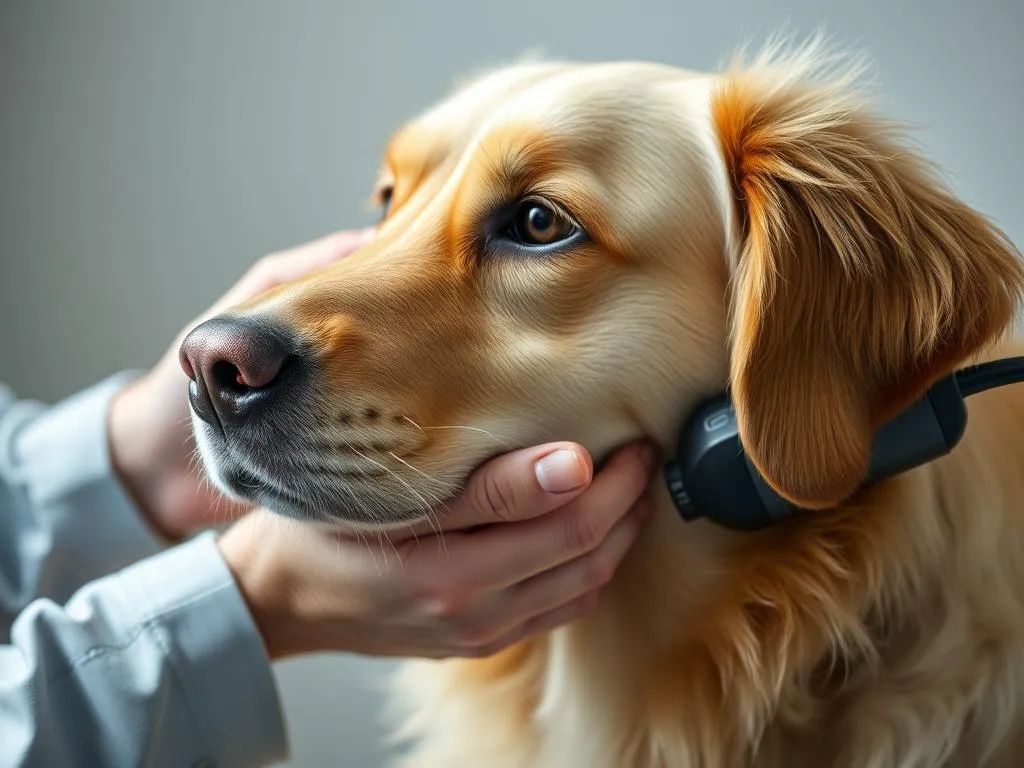
Monitoring a dog’s health is essential for ensuring their overall well-being. One crucial aspect of this is blood pressure. Understanding and regularly checking your dog’s blood pressure can reveal significant insights into their health status. Abnormal blood pressure levels can indicate underlying health issues, making it vital for pet owners to be informed about how to take a dog’s blood pressure.
Understanding Canine Blood Pressure
What is Blood Pressure?
Blood pressure is the force of circulating blood against the walls of blood vessels. It is typically expressed in two numbers: systolic and diastolic. The systolic pressure measures the pressure in the arteries when the heart beats, while the diastolic pressure measures the pressure in the arteries when the heart rests between beats.
For dogs, normal blood pressure ranges are generally considered to be around 120-130 mmHg for systolic pressure and 70-80 mmHg for diastolic pressure. However, these values can vary based on the dog’s breed, age, and overall health.
Importance of Monitoring Blood Pressure in Dogs
Monitoring your dog’s blood pressure is essential because it provides insight into their cardiovascular health. High blood pressure, also known as hypertension, can lead to serious conditions such as heart disease, kidney issues, and even stroke. Conversely, low blood pressure, or hypotension, can result in inadequate blood flow to vital organs, leading to severe health complications. Regular monitoring helps in early detection of these issues, enabling timely intervention.
When to Check Your Dog’s Blood Pressure
Signs Your Dog May Need Blood Pressure Monitoring
Certain symptoms may indicate that your dog requires blood pressure monitoring. These can include:
- Lethargy: Unusual tiredness or a lack of energy.
- Weakness: Difficulty standing or walking.
- Nausea: Signs of vomiting or lack of appetite.
- Vision Problems: Sudden changes in vision or signs of disorientation.
- Respiratory Issues: Difficulty breathing or rapid panting.
Additionally, if your dog has pre-existing conditions such as kidney disease, diabetes, or is on medications that affect blood pressure, regular monitoring becomes even more critical.
Recommended Frequency for Blood Pressure Checks
The frequency of checking your dog’s blood pressure can vary. Generally, it is recommended to check:
- Monthly for dogs with known health issues or those on medication affecting blood pressure.
- Every 3-6 months for senior dogs or those with risk factors.
- Annually for healthy dogs, unless advised otherwise by your veterinarian.
Preparing for the Blood Pressure Check
Equipment Needed
To measure your dog’s blood pressure accurately, you will need specific equipment:
- Blood Pressure Cuff: A cuff specially designed for dogs.
- Doppler Ultrasound: This device aids in detecting the heartbeat and blood flow.
- Stethoscope: To listen to your dog’s heartbeat.
You can purchase or rent these tools from veterinary suppliers or online pet health stores. It’s important to ensure that the cuff is the right size for your dog to achieve accurate readings.
Creating a Calm Environment
Creating a stress-free environment is critical for obtaining accurate blood pressure readings. Here are some tips:
- Choose a Quiet Space: Select a calm area free from distractions.
- Familiarization: Let your dog explore the equipment before the procedure to reduce anxiety.
- Positive Reinforcement: Use treats and praise to create a positive association with the process.
Step-by-Step Guide to Taking a Dog’s Blood Pressure
Positioning the Dog
Positioning your dog correctly is crucial for accurate results. Here’s how to do it:
- Comfortable Position: Have your dog lie down, either on their side or in a sitting position, depending on their comfort level.
- Stay Calm: Speak softly to calm your dog and ensure they feel secure.
Using the Blood Pressure Cuff
The application of the blood pressure cuff is vital for accurate readings. Follow these steps:
- Placement: Place the cuff around your dog’s leg or tail, depending on the device you are using.
- Size Matters: Ensure the cuff fits snugly but not too tight; it should allow for a finger to slide underneath comfortably.
Taking the Measurement
To take the blood pressure reading, follow these steps:
- Turn on the Doppler Device: Ensure it is correctly set up and ready to use.
- Inflate the Cuff: Gradually inflate the cuff until the pulse sounds are no longer audible.
- Deflate Slowly: Slowly release the pressure while listening for the pulse to return.
- Record the Reading: Note the systolic pressure (when the pulse returns) and diastolic pressure (the point at which the pulse sounds disappear).
Interpreting the results involves comparing them with normal ranges.
Interpreting Blood Pressure Readings
Understanding the Numbers
When you receive the blood pressure readings, it’s essential to understand what they indicate:
- Normal Readings: Systolic (120-130 mmHg) and diastolic (70-80 mmHg).
- Hypertension: Systolic above 140 mmHg or diastolic above 90 mmHg.
- Hypotension: Systolic below 100 mmHg or diastolic below 60 mmHg.
When to Seek Veterinary Help
If you obtain readings outside the normal range, it’s vital to consult your veterinarian. Signs that require immediate attention include:
- Severe lethargy or weakness.
- Vomiting or diarrhea.
- Changes in breathing patterns.
Regular follow-ups with your vet can help monitor your dog’s blood pressure accurately and implement necessary treatment if needed.
Maintaining Healthy Blood Pressure in Dogs
Lifestyle Changes
Maintaining healthy blood pressure in dogs often requires lifestyle modifications:
- Diet: Consider a low-salt diet to help manage blood pressure levels. Consult your vet for appropriate dietary recommendations.
- Exercise: Regular physical activity is essential. Aim for daily walks and playtime to keep your dog active and maintain a healthy weight.
- Weight Management: Obesity can significantly affect blood pressure; manage your dog’s weight through diet and exercise.
Regular Veterinary Check-ups
Routine veterinary visits are crucial. Vets perform comprehensive health checks, including blood pressure monitoring, and can provide guidance on managing your dog’s health. They can also recommend specialized diets or medications if needed.
Common Questions About Dog Blood Pressure
FAQs
Many pet owners have questions regarding how to take a dog’s blood pressure and its implications. Here are some commonly asked questions:
-
Is it safe to take my dog’s blood pressure at home?
Yes, as long as you have the proper equipment and follow the right procedures. However, always consult your vet for guidance. -
Can stress affect my dog’s blood pressure readings?
Absolutely. Stress can elevate blood pressure, so ensuring a calm environment is critical for accurate readings.
Clarifications on Misconceptions
Some pet owners may believe that only older dogs or those with existing health problems need blood pressure checks. In reality, all dogs can benefit from occasional monitoring, especially as they age or if they exhibit concerning symptoms.
Conclusion
Monitoring a dog’s blood pressure is a vital component of responsible pet ownership. Understanding how to take a dog’s blood pressure and recognizing the signs of abnormalities can lead to early detection of potential health issues. By incorporating blood pressure monitoring into your dog’s health care routine, you can take proactive steps to ensure their well-being. If you have concerns about your dog’s blood pressure, don’t hesitate to schedule a visit with your veterinarian. They can provide personalized guidance and support for maintaining your dog’s health.
References
- American Veterinary Medical Association
- Veterinary Clinics of North America
- Journal of Animal Physiology and Animal Nutrition
- The Merck Veterinary Manual









